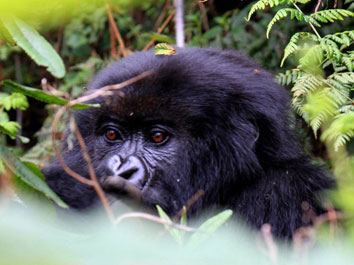Deep survey of ape genetic diversity compiled

04/07/2013
The work, led by Dr Tomás Marquès Bonet of the Institute of Evolutionary Biology (Pompeu Fabra University - CSIC) and Dr Evan Eichler of the University of Washington is one of the most comprehensive and detailed surveys made of genetic diversity in wild-born great ape populations. This group of primates includes humans, together with our closest relatives, chimpanzees, gorillas and orangutans. These species all share a common ancestor that lived about 14-16 million years ago.
Recent advances in genome sequencing technologies have allowed researchers to learn about the genetic diversity hidden in cells, especially in the case of human populations. In contrast however, far less attention has been given to our great ape relatives, largely due to the difficulty in obtaining DNA samples from endangered species like chimpanzees, gorillas and orangutans. This new study provides us with a great catalogue of the genetic diversity of these species, thanks to a major international effort to collect material from specimens across Africa and South-East Asia.
The researchers found that human genomes show relatively little variation between each other in comparison to most great apes. For example, the genomes of a pair of orangutans differ in more than 2 out of every 1000 base-pairs, compared to 1 out of every 1000 base-pairs between any two humans. This is the result of an event called a "population bottleneck" (a dramatic fall in population numbers at some time in the past), which seems from the evidence to have been much sharper in ancestral human populations than in most of great apes. Not only humans have been affected by this, though: a few species of great apes, namely certain populations of Eastern lowland gorillas, Western chimpanzees and bonobos have probably also experienced it. All of these species showed evidence of severe bottlenecks in their ancient history possibly explaining the reduced genetic diversity.
The study also focuses on the evolutionary history of our closest relatives, chimpanzees, who are dispersed across Africa and classified into four major groups, or subspecies. An open question among evolutionary biologists has been how these four populations relate to one another. By sequencing multiple individuals from each group, the researchers were able to resolve the phylogenetic relationship between these subspecies distinguishing two genetically distinct groups of chimps. What also became apparent was the complexity of the evolutionary history of chimpanzees compared to humans. The patterns of genetic diversity found in chimpanzees were consistent with extensive gene flow or migration between ancestral populations with sudden expansions in population size followed by crashes.
This work brings some new hope regarding the conservation of great ape species, which are literally on the brink of extinction. Knowing more about the genomes of these species will help us to identify the origin of poached great apes(an activity that still continues, unfortunately), and better manage captive breeding programs, thus giving a boost to conservation efforts. In this latter sense, the group headed by Dr Aurora Ruiz-Herrera (http://grupsderecerca.uab.cat/evolgenom/) is currently collaborating with the Barcelona Zoo Foundation on the creation and cryopreservation of a repository of cell lines derived from mammalian specimens of the collection (the CRYOZOO). Currently, very few centres worldwide have the capacity to create and maintain live genetic material of endangered species. The cell lines generated will provide a invaluable tool for understanding the present state of animal biodiversity, which, in turn, is necessary for the preparation of future research and conservation programmes, and provides useful material for studying the biology, genetics and evolution of different species.
Image: Aurora Ruiz-Herrera